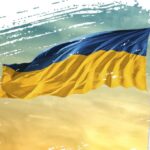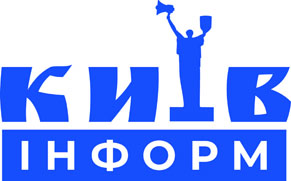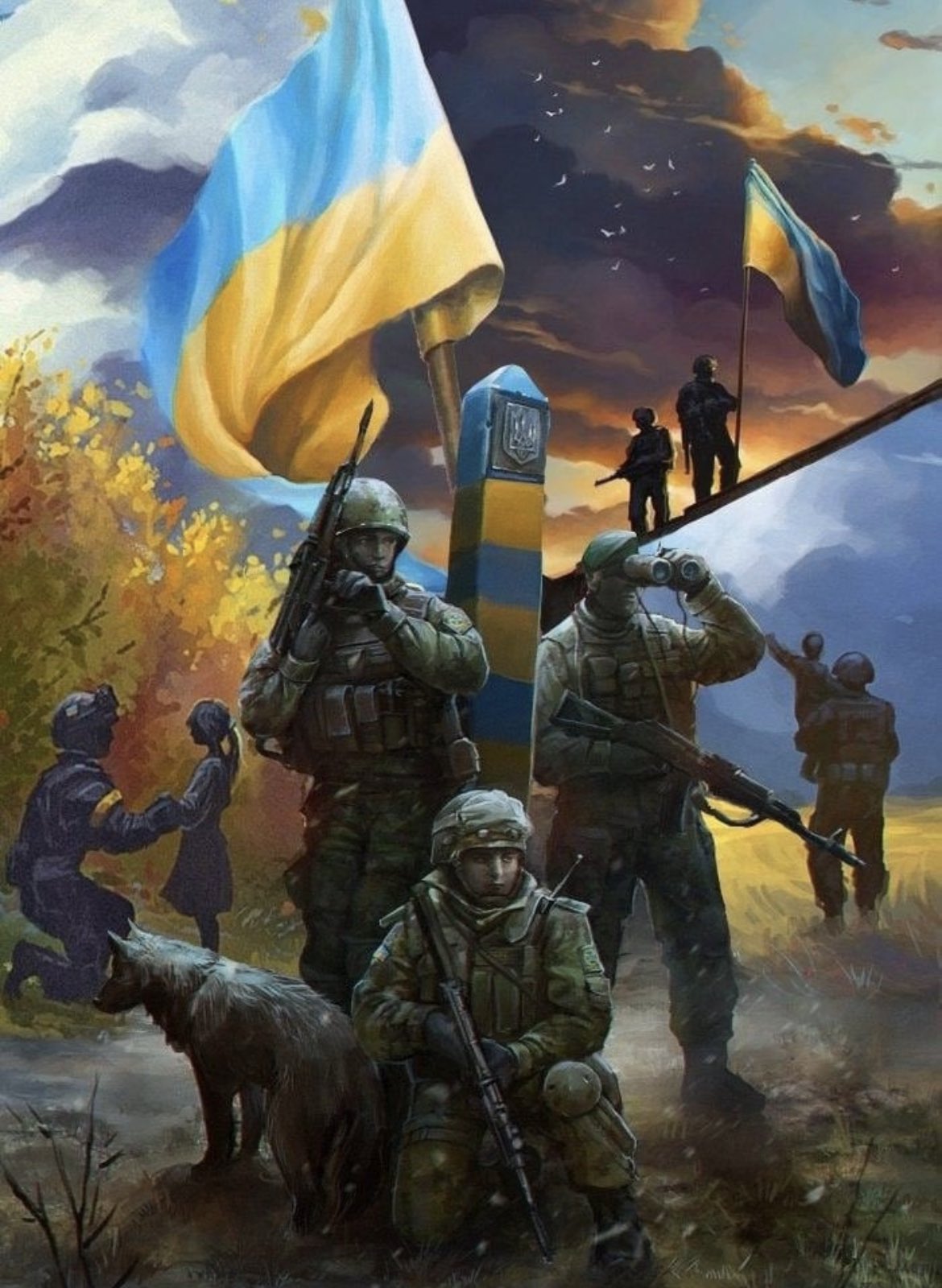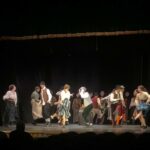
(essay)
While researching texts written about Ukrainian feminism, I found out that the process of the emergence of Ukrainian feminism differs significantly from the currents and directions of the first wave of Western European and American feminism. Among the reasons are the facts that the Ukrainian lands were divided between the Austro-Hungarian and Russian empires, national and educational issues, political changes and the emergence of socialism. Although feminism was classified as a bourgeois ideology (anti-Soviet and counter-revolutionary) during the Soviet Union, after Ukraine gained independence in 1991, the feminist movement revived and is now actively developing as activism, gender studies, feminist art, gender media, and gender politics. My goal in this paper is to understand the prerequisites for the emergence of the movement for equal rights, the motives of the first feminists, the main directions of activity, as well as the differences in Western and Dnieper Ukraine.
Prerequisites
The movement for women’s rights in Ukraine in the last third of the 19th – early 20th centuries was not yet a political movement in the modern sense of the word, as a rule, it was designated by the term “women’s movement”. Demands mainly concerned the civil rights of women: to education, professional activity, and participation in public life. Later, the requirement for the right to vote in elections and other political rights was added. The way feminism developed in Western Ukraine was different from how it happened in Dnieper Ukraine, because the former was part of the Austro-Hungarian Empire, and the latter part of the Russian Empire.
At the beginning of its generation in the Ukrainian lands within the borders of the Russian Empire, feminism was quite homogeneous and not always organizationally independent: women united mainly for joint educational, literary and charitable activities. The first women’s organization in Ukraine, the Society for Aid to Women’s Higher Education, emerged in Kharkiv in 1840 as a branch of all-Russian women’s and public organizations fighting for women’s access to higher education (such permission was obtained in 1860 when the government founded Higher Women’s Courses in Kyiv, in 1880 – in Kharkov). The first Ukrainian women’s group began operating in 1884 in Kyiv, headed by Ukrainian public figure O. Dobrograeva.
Until 1905, the Russian Empire remained an absolute monarchy, that is, a country where active political life or the creation of political parties was impossible for either men or women. The women’s movement developed in legal and illegal forms. Among the legal ones are demands for the right to education, in particular, higher education on an equal basis with men and permission to study abroad, defending the possibility of pedagogical (teaching at universities, schools, gymnasiums) and scientific activities.
In 1905, the Kyiv Society for the Protection of Women was founded, headed by physician Vera Klyachkina. This society fought against prostitution, helped its victims to get out of difficult circumstances, defended their human dignity and rights.
The first woman to receive a professorship in the Russian Empire was Alexandra Efimenko, who began teaching at the private Bestuzhev Higher Courses for Women in St. Petersburg in 1910. It was much more difficult for women to get to study, and even more so to get a job at the “male” state (imperial) universities. One of the first to succeed was the historian Natalia Polonskaya (later Polonskaya-Vasilenko), in 1915 she became assistant professor at St. Vladimir. Natalia Polonskaya-Vasilenko did not position herself as a feminist or an active participant in the women’s movement, but she paved the way for other women with her example.
Another illegal form of women’s activism at the end of the 19th century was participation in socio-political movements, primarily “going to the people”. Populists de facto put themselves in the struggle on the same level with men in the common struggle. In Ukraine, the most famous was Catherine Breshko-Breshkovskaya. The purpose of “going to the people” was the enlightenment of the peasants, the propaganda of the overthrow of the tsarist power and the struggle against the autocracy. In Ukraine, this movement took on a slightly different direction and, above all, was a cultural and educational activity that contributed to the development of national consciousness. Women who placed themselves outside the imperial law were persecuted and tried in the same way as men.
In Western Ukraine, political life was freer, so women had more opportunities. The struggle for rights was complicated by the fact that these lands were at first the part of the Habsburg Empire, and after 1918 – Poland. Under such conditions, for Ukrainian women, emancipation was an integral part of the national liberation, in the struggle for which they joined. Marta Bogachevska-Chomyak called this concept “pragmatic feminism”. According to her, the demands for women’s equality were realized through socio-political and educational activities, activism was closely connected with the national idea.
Natalia Kobrynska and Olga Kobylyanska are considered the first Ukrainian feminists who formulated the concept of the struggle for women’s professional self-realization and civil rights. The first women’s organization in Western Ukraine was the Society of Russian Women, founded on the initiative of Natalia Kobrynska in 1884 in Stanislav (now Ivano-Frankivsk). Kobrynska managed to establish cooperation with Ukrainian women in the Russian Empire – in 1887 she and Olena Pchilka published the almanac of Ukrainian women “The First Wreath”. Sofia Okunevska-Morachevska received her medical education in Switzerland and became the first female doctor in Western Ukraine. Her colleague in the women’s movement was also Natalia Kobrynskaya. Important for the strengthening and politicization of the women’s movement in Galicia was the participation in the First World War of the female couple of the Ukrainian Sich Riflemen, led by Elena Stepaniv.
Sophia Rusova, a well-known teacher, a member of the Ukrainian Central Rada, was realized in national, public, educational, and later political activities. Later, in exile, she drew the attention of the world community to the problem of the Holodomor of 1932-1933 in Soviet Ukraine. The same problem was raised at the international level by Milena Rudnytska, a Ukrainian political activist from Galicia, who since 1928 headed one of the largest feminist organizations in Europe, the “Union of Ukrainian Women”. This political organization was one of the largest feminist organizations in Europe.
Role models and tempo difference
In Soviet Ukraine in the 1920s and 1930s, the emancipation of women was part of the building of socialism. The women’s movement that took shape under tsarist Russia ceased to be properly women’s and became part of politics. To restore the country, a labor force was needed, so the government placed a bet on the involvement of women in production – it encouraged achievements and professional records in areas previously closed to women. Calls to master “non-female” professions are seen on many posters.
The title of Heroes of the Soviet Union was the first among women to be given to female pilots: Valentina Grizodubova, Marina Raskova and Polina Osipenko. The latter went from a poorly educated peasant woman to a popularly known heroine; on her example, the authorities promoted opportunities for women of different social status. The “pantheon” of honored women leaders in production included the agricultural shock worker Maria Demchenko, who grew a record harvest of sugar beet: with ostentatious success, the authorities wanted to hide the catastrophe and the crimes of the Holodomor. The press also praised the women who built the metro, the pioneers of “male” professions, such as, for example, the female ship captain in the Black Sea-Azov Shipping Company Natalia Kissa.
Newspapers told about the “chosen” heroines, these women embodied the state policy of emancipation, demonstrated the opportunities provided by the new government. But it was much more difficult for young people who were inspired by their examples to achieve the same results. On the ground, women often faced sexism, prejudice and stereotypes about their abilities. At the same time, Komsomol organizations, youth sports and paramilitary circles actively involved girls and encouraged many to go to the front as volunteers in World War II.
The government guaranteed women equal political, active and passive voting rights. Women’s councils, local executive authorities and trade unions took care of them and defended their rights. Is it sufficient? The question is ambiguous, because the social sphere has never been a priority of the Soviet state.
In Galicia, which was part of Poland in 1920-1930, feminism developed as an independent political movement, although it retained a close connection with the national movement, since women considered emancipation impossible without the freedom of the Ukrainian nation. The “Union of Ukrainian Women” was one of the main women’s socio-political organizations in Western Ukrainian lands in the interwar period. The members of the union sought equal political influence with men, including for the joint defense of the national question. There were also women among the Ukrainian representation in the Polish Sejm. Milena Rudnitskaya, as part of the Ukrainian parliamentary representation, represented the interests of Ukraine in the League of Nations. Elena Levchanivska became the first woman senator from Volhynia.
Conclusion
As we can see, the feminist movement in Ukraine has existed for a long time and was born at the same time as the world tendencies towards emancipation. Feminism in Western and Dnieper Ukraine went through the same path from a cultural and social movement to a political phase at the beginning of the 20th century, but subsequently developed in different ways. Many women have tried to get out of gender stereotypes and make a huge contribution to the development of feminism and advocacy of women’s rights in Ukraine. Feminism in Western Ukraine developed in line with global trends in the women’s movement, which entered a political phase, including the struggle for civil and political, primarily electoral, rights. The concept of freedom and emancipation in Soviet Ukraine, as well as throughout the USSR, was interpreted differently than in the West. A woman in the Ukrainian SSR was free, but on the condition that she should be placed under the control of the Soviet regime. Previously, the movement was led by representatives of the Ukrainian intelligentsia – both men and women – but in the Soviet period, all progressive ideas were leveled and had no chance of implementation. And only in the last 30 years has the feminist movement managed to gain new momentum.
Works Cited
Bohachevsky-Chomiak, Martha. Feminists Despite Themselves: Women in Ukrainian Community Life, 1884–1939. University of Alberta Press, 1988.
Богачевська, Марта. Білим по білому: Жінки у громадському житті України, 1884–1939. Київ, 1995.
Веселова, Олександра. Жіночий рух: Нарис історії України ХХ століття. Київ, 2002.
Скорик, Мирослав. Основи теорії гендеру. Київ, 2005.
Козуля, Олесь. Жінки в історії України. Київ, 1993.
Омельчук, Михайло. Жіночий рух в Україні: історія і сучасність. Київ, 1994.

























































Залишити відповідь